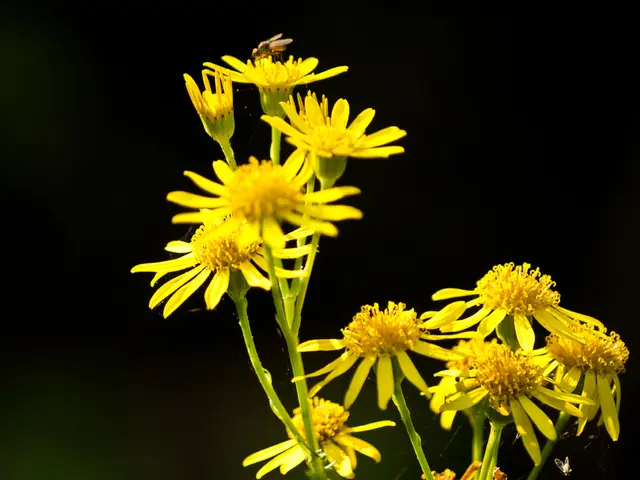Guide to Birthstones: Opal for October Birthdays
Opals, prized for their unique play-of-color and long historical significance, have captivated humankind for millennia. From the precious opals of Australia to the fiery fire opals of Mexico, these gemstones come in various forms, each with distinct characteristics and care requirements.
1. Precious Opal
Renowned for their display of "play of color," precious opals have been cherished since ancient times. A significant portion of Australian opal mining consists of precious opals, with black opal, the rarest variety, mostly found in Lightning Ridge, Australia. These opals consist of tiny silica spheres that diffract light into spectral colors, creating the mesmerizing play of color.
Precious opals are amorphous hydrous silicon dioxide, with hardness roughly 5.5–6.5 on the Mohs scale and no cleavage. Transparency varies from translucent to opaque, with body tone scaling from light to dark, influencing the brilliance of color play. Black opal's dark tone amplifies color contrast.
Due to their moderate hardness and amorphous structure, precious opals are sensitive to harsh impacts, extreme temperature changes, and prolonged exposure to chemicals or ultrasonic cleaners. Recommended care involves gentle cleaning with a soft cloth, avoiding soapy soaks or steam, and storing separately to prevent scratching.
2. Common Opal
Unlike precious opal, common opal does not display play of color. It is more abundant and historically less valued but still used in jewelry and ornamental objects. Its chemical structure is similar to precious opal but lacks the regular silica sphere arrangement responsible for diffraction.
Care considerations are similar to precious opals due to similar physical properties—avoid impact and harsh chemicals; gentle cleaning is advised.
3. Fire Opal
Fire opals are known for their vivid yellow, orange, or red body colors and are mainly mined in Mexico. They may show play of color or be more transparent without it.
They have a transparent to translucent body with warm hues, sometimes displaying play of color but often prized just for their fiery body tone. Hardness is comparable to other opals.
Similar care to other opals is required: protect from shocks, avoid harsh cleaning methods, and store carefully.
4. Synthetic Opal
Synthetic opals are lab-created mimics designed to replicate precious opal’s play of color and appearance but are distinguishable by their more regular or "lizard-skin" patterns and often lower cost. They have been produced since the mid-20th century to provide affordable alternatives.
Synthetic opals share chemical and structural properties with natural opals but tend to show more uniform internal silica sphere patterns. Their physical behavior and hardness largely mirror natural opals.
Synthetic opals require similar care to natural opals due to similar sensitivity. They may be slightly less delicate in some manufacturing variants but still need protection from impact and chemicals.
5. Boulder Opal
Boulder opal is native to Queensland, Australia, where precious opal forms naturally attached to ironstone host rock. Its discovery enriched the opal market with unique stones showcasing both opal color and matrix rock patterns.
Boulder opals have opal veins or patches within ironstone, giving them strength and a distinctive look. Color play can be intense and varied, with natural matrix patterns contributing to aesthetic appeal. These opals are generally tougher than other types because the matrix provides structural support.
Boulder opals are somewhat sturdier than pure precious opals but still require gentle handling. Standard opal care practices apply: avoid harsh chemicals, keep away from high-impact activities, and clean softly.
Additional Notes: Hyalite Opal (not one of the primary categories but of interest)
Hyalite opal is a clear or pale yellow opal that fluoresces green under UV light due to trace uranium content. It is a rare and remarkable type with special optical properties and negligible radioactivity.
Care involves similar cautions to other opals, with emphasis on avoiding ultrasonic cleaners and harsh cleaning.
In summary, all opals share a delicate nature requiring careful handling and storage. Differences lie primarily in their internal silica structure (which creates play of color), body tone, host rock inclusion (boulder opal), and origin. Historical significance varies with rarity and geographic source, with precious opals generally commanding the highest esteem and value. Care practices focus on protecting their relatively low hardness, amorphous structure, and sensitivity to environmental factors such as heat and chemicals.
This comprehensive view integrates physical, historical, and care attributes of the main opal categories.
6. Opals and Lifestyle
Incorporating opals into one's lifestyle extends beyond jewelry. These gemstones can adorn fashion-and-beauty items—such as sunglasses or statement earrings—and design elements within home-and-garden spaces.
Nowadays, food-and-drink industries use opals as edible decorations, and even cars can sport opal-inlaid interiors for a touch of luxury.
One can find various opal merchandise through shopping channels, both online and offline. Travelers may visit pet-friendly accommodations or airbnbs showcasing opal-themed furnishings and decorations.
Conversely, those with a passion for relationships can give unique opal gifts to their loved ones, symbolizingged mutual understanding and ancient history's beauty. For pet enthusiasts, opal keepsakes can commemorate pets’ precious memories.
As this exploration reveals, the world of opals seamlessly interweaves with various aspects of daily life, making it an appealing and versatile element for enriching one's lifestyle and expanding personal connections.




